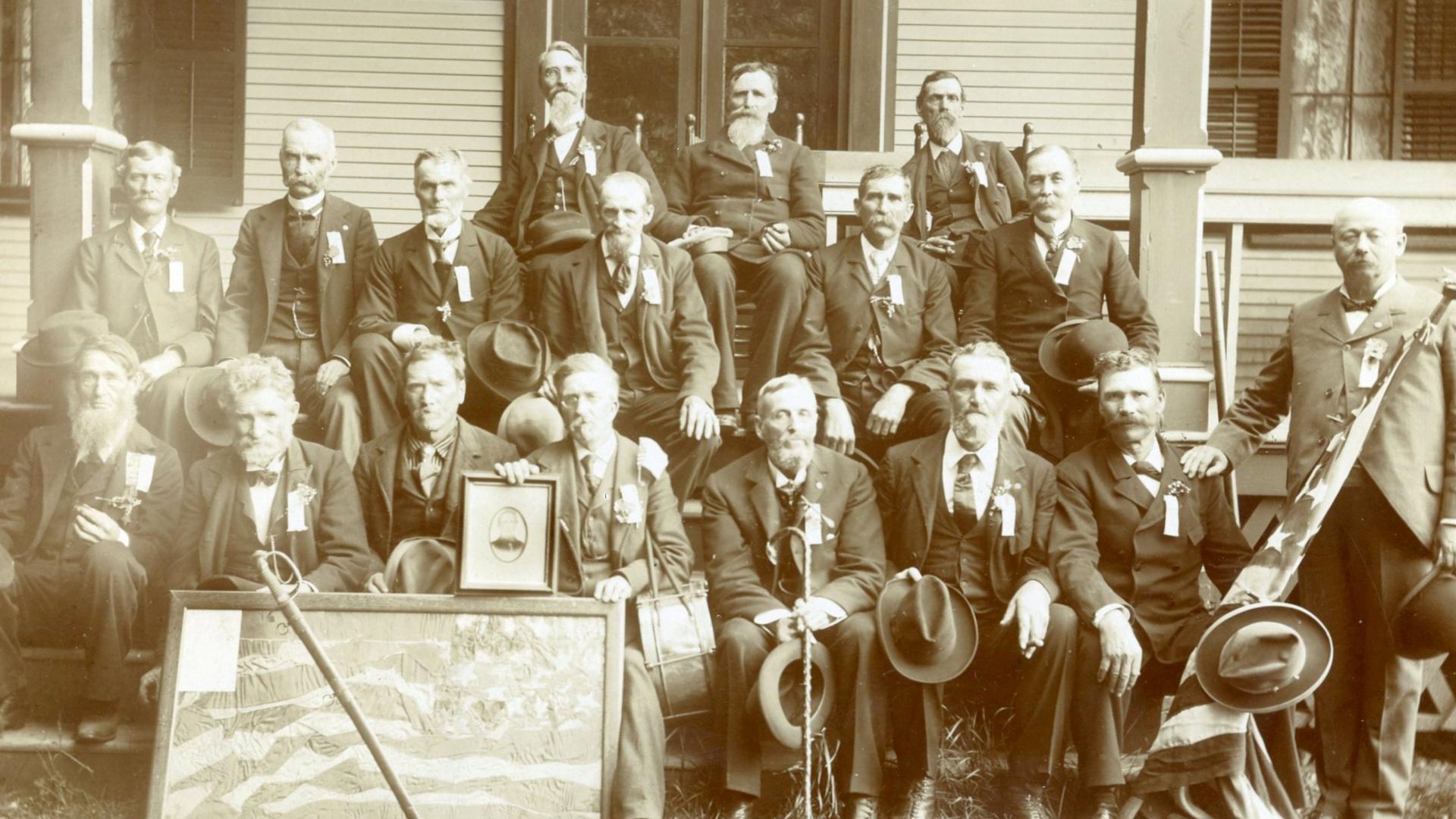
When it became obvious in 1862 that the war was not going to be won easily Lincoln called for 50,000 more troops from New York State. In Plattsburgh, the 118th Infantry Regiment, the Adirondack Regiment, recruited 1,040 men Clinton, Essex and Warren counties and mustered them into service for three years in August, 1862. The regiment left New York on September 3, 1862 to take up their assignment of guard and provost duty at Fort Ethan Allen, six miles northwest of Washington, D.C. They found illness prevalent throughout the fort and the soldiers lacked food and proper clothing.
The following April, the regiment went south for the Siege of Suffolk, VA and reconnaissance and skirmishing in Portsmouth, VA. In May, the regiment moved to Portsmouth, VA, and spent much of the month in reconnaissance and skirmishing. During june and July, 1863, the regiment participated in Dix's Peninsula Campaign and fought at the South Anna Bridge.
Still in eastern Virginia in 1864, the regiment was assigned to the Army of the James where they participated in continuous fighting against Petersburg and Richmond in May, including the Battle of Swift Creek, a fierce engagement at Drewry’s Bluff and the ill-fated Bermuda Hundred Campaign. In June, Grant ordered them into the brutal Battle of Cold Harbor followed by fighting on the right flank of the Union line at the Second Battle of Petersburg. The final actions of 1864 for the 118th were the Battle of Chaffin’s Farm and the attack on Fort Harrison in September, followed by the second Battle of Fair Oaks in October. During the winter 1864-65, the New Yorkers manned the trenches outside Richmond and were the first unit to enter the abandoned confederate capital in the spring of 1865 where they were mustered out of service on June 13, 1865. The regiment lost 99 men in action, 188 died of disease or other causes, 238 were wounded, and 142 were reported missing.
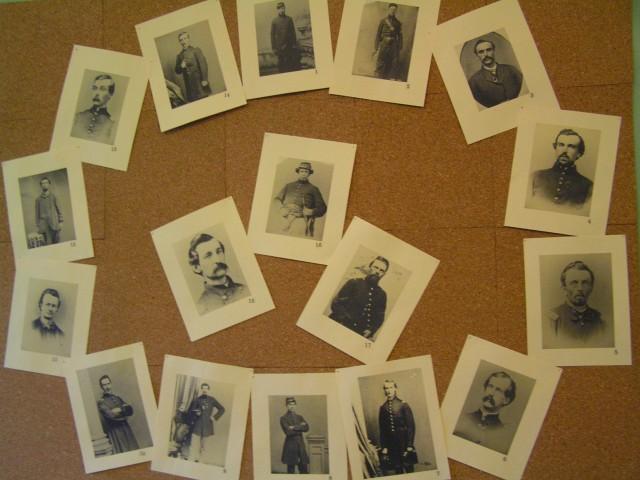
The Lincoln administration realized the need for more cavalry units after the panicked retreat of the Union army at the first battle of Bull Run. In response, John Hammond opened a recruiting office in Crown Point where many of the town’s most prominent men were so eager to join that they didn’t even wait for official enlistment papers. With money advanced by John Hammond’s father, Charles F. Hammond, the owner of an iron mining company, they purchased 108 horses, most of them Morgan’s, a uniquely American breed known for their stamina and courage. 106 men signed up from Crown Point and surrounding towns and were mustered into the 5th New York Cavalry, Company H in October 1861.
After training during the winter of 1861-62, the Fifth Regiment saw continuous service for four years. Initially, they provided reconnaissance and protection for the infantry and their supply lines in the Shenandoah Valley and faced General “Stonewall” Jackson at Front Royal and Winchester, VA., Then the regiment did picket and scouting duty along the Blue Ridge and in Central Virginia, engaging frequently with John S. Mosby’s Partisan Rangers. They fought in a cavalry battle at Orange Court House, Va. followed by the battles of Cedar Mountain, Groveton, Second Bull Run and Chantilly. In June 1863, as part of the famous Third Division, Cavalry Corps, Army of the Potomac, John Hammond took over command of the entire regiment and started on the Gettysburg campaign during which they were constantly engaged and lost heavily in officers and men at Hanover, Pa., Gettysburg, Monterey Pass, and Hagerstown. In 1864, they became part of General Sheridan’s Cavalry Corps under Grant and took part in the Battles of the Wilderness, Spotsylvania, North Anna, Cold Harbor, and Wilson’s Raid at White Oak Swamp. At the beginning of the Battle of the Wilderness, Hammond and a detachment of about 500 soldiers, armed with Spencer carbines, held off the advance of General A.P. Hill’s III Corps for almost 6 hours near Parker’s Store. On August 30th, his three year enlistment finished, Col. Hammond departed for home. Company H of the New York Fifth Cavalry went on to fight in Sheridan’s brilliant campaign in the Shenandoah Valley, particularly the Battle of Cedar Creek in October, 1864.
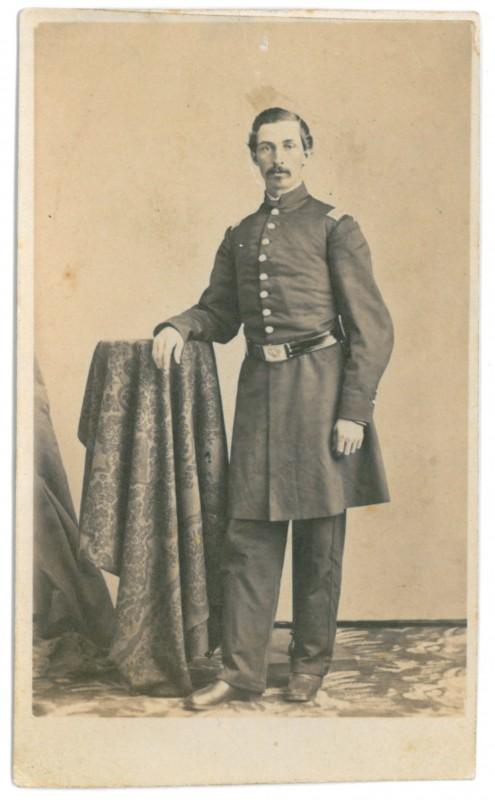
After over 119 skirmishes and 52 battles, the regiment was mustered out at Hart's Island, New York Harbor, July 19, 1865. Original number of men, 1,064; recruits added, 1,074; 103 men killed in action; 18 killed accidently; 258 wounded; 536 captured; 114 died in rebel prisons; 94 died of disease; 18 men lost in action and never heard from; men remaining and mustered out with regiment, 694; original veterans remaining, 167; original horses remaining, 7 (and they all belonged to Company H).
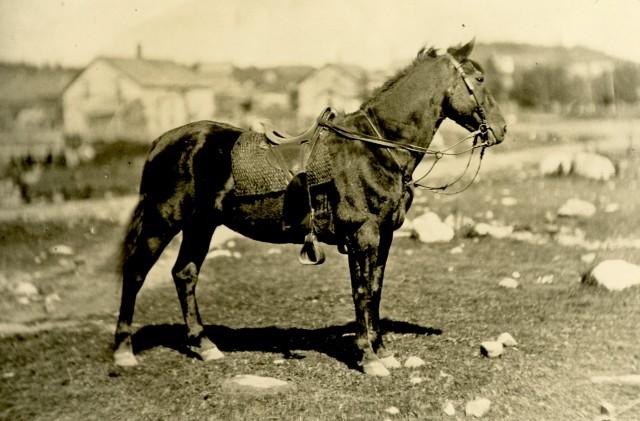
In commemoration of the 150th anniversary, the Adirondack History Center will focus the 2013 season on the powerful story of Essex County at the time of the Civil War. The museum recently had the grand opening of its new exhibit, The Human Face of the Adirondacks in the Civil War. The exhibit tells the story of two Essex County army units through the letters, diaries, and writings of their soldiers. These writings are accompanied by numerous Civil War artifacts, including a Spencer Carbine and other weapons, a Civil War writing desk, various pieces of apparel, money, and other personal items. The exhibit is powerful and evocative, both sad and touching.
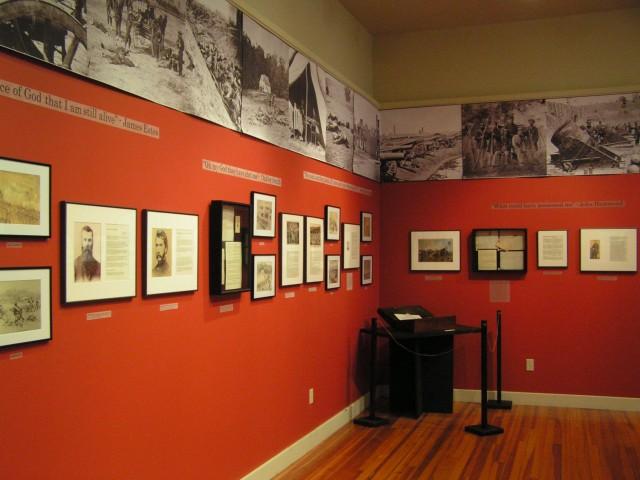
Our summer lecture series includes:
- An Overview of the Civil War by Andy Buchanan, July 16
- On the Trail of the USS Monitor by Morris Glen. July 23 (Crown Point iron mining and its role in the Civil War)
- Between This World & the Next: The Adirondack Regiment by Sharp Swan, July 30
- Company H and the New York 5th Cavalry Regiment by Brent Vosburg, August 6
- Vignettes of the Home Front in the Civil War by Carol Blakeslee-Collin, August 13
- Roundtable Discussion with Civil War Historians and Researchers, August 20
- Voices of the Civil War (wine & cheese reception w/ music), August 27
Other Civil War events:
- “Copperhead” playing at Cumberland 12 movie theater, in Plattsburgh, for 1 week, starting June 28. On Friday June 28th, there will be reenactors at the theater from 7-9pm in uniform, showing artifacts, etc. and they will be there again at noon on Saturday June 29th.
- Civil War Youth Camp at CCHA, July 9-12 & July 16-19
- Civil War Encampment-North Hudson, July 20
- A View of Essex County at the Time of the Civil War, historic photos and lecture by Margaret Bartley, July 21 3:00 at the Adirondack History Center Museum.
- Stories of Civil War Union Soldiers at the Strand Theater in Schroon Lake, Sept. 15
For more information you can contact museum staff at:
ADIRONDACK HISTORY CENTER MUSEUM
ESSEX COUNTY HISTORICAL SOCIETY
PO Box 428, 7590 Court Street
Elizabethtown, NY 12932
Phone:
(518) 873-6466
Email:
General Information: echs@adkhistorycenter.org
Research Queries: research@adkhistorycenter.org
